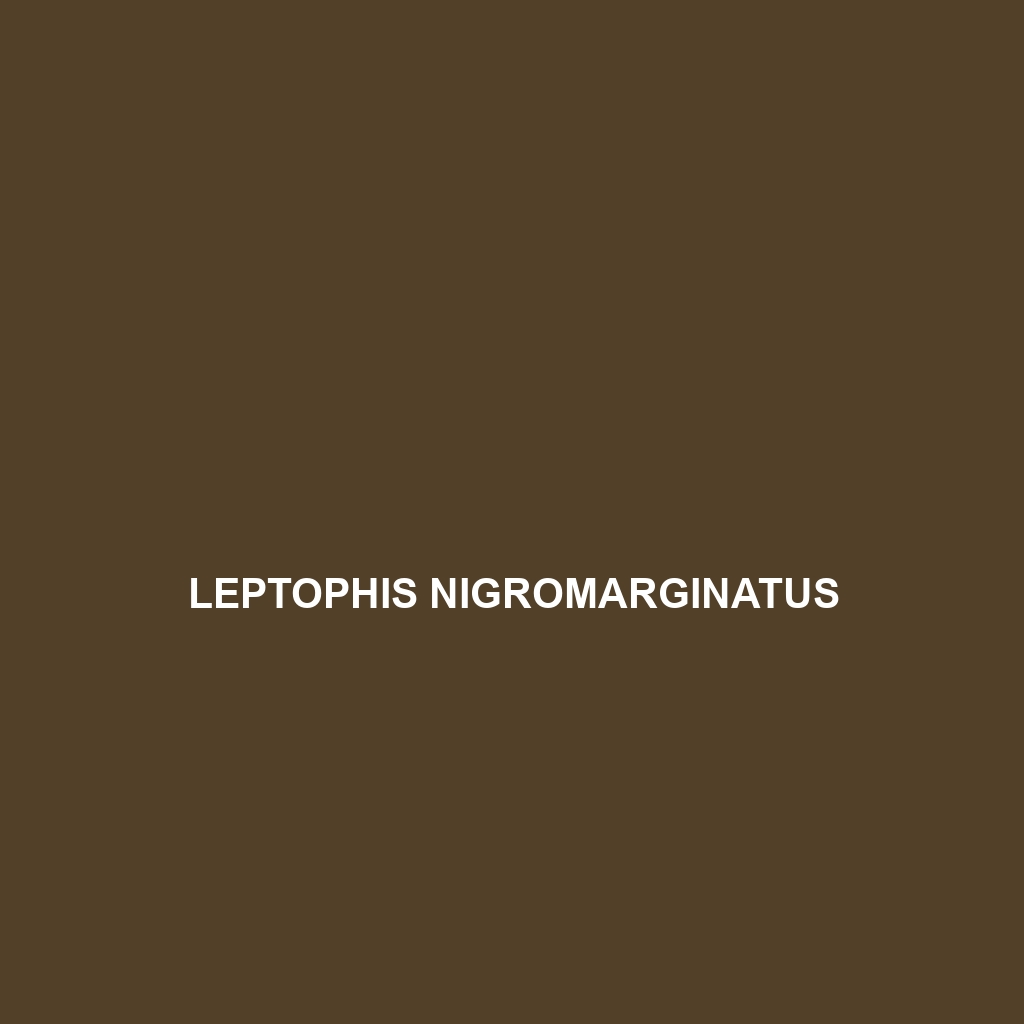Common Name
Leptophis nigromarginatus
Scientific Name
Leptophis nigromarginatus
Habitat
Leptophis nigromarginatus, commonly known as the black-margined leaf racer, is primarily found in the lush rainforests of Central and South America. This species thrives in tropical climates, preferring humid environments where they can easily navigate through the understory of dense vegetation. Geographically, Leptophis nigromarginatus has been documented in regions from southern Mexico extending down through countries such as Costa Rica, Panama, Colombia, and parts of Ecuador. These snakes often inhabit areas characterized by rich, moist soils and a variety of plant life, making them integral components of their ecosystem. They are also observed in savannas and near freshwater sources, indicating adaptability to various tropical environments.
Physical Characteristics
Leptophis nigromarginatus displays a slender and elongated body, reaching lengths of up to 1.5 meters. Its most distinctive feature is its striking coloration; the dorsum is typically a vibrant green or yellow-green, adorned with thin black margins along the scales, hence the name. This coloration not only serves as camouflage among the leaves but also provides a beautiful display for potential mates. The species has large, expressive eyes that enhance its vision, which is crucial for its primarily arboreal lifestyle. The underside is generally paler, which assists in blending with the sky when viewed from below.
Behavior
Diet
Reproduction
The reproductive cycle of Leptophis nigromarginatus begins with mating rituals that take place during the rainy season, which usually spans from May to July. After mating, females undergo a gestation period of approximately 4-6 weeks before laying clutches of 6 to 15 eggs. The eggs are often hidden in leaf litter or moss to provide protection until they hatch. Hatchlings are independent from birth and are roughly 20-25 centimeters in length, fully capable of hunting and foraging on their own. Parental care is absent after egg-laying, as the young are equipped to survive in their environment without assistance.
Conservation Status
According to the International Union for Conservation of Nature (IUCN), Leptophis nigromarginatus is currently classified as Least Concern; however, ongoing habitat loss due to deforestation and human encroachment poses significant threats to its population stability. Conservation efforts focus on protecting their natural habitats, promoting sustainable land-use practices, and increasing awareness about the importance of preserving rainforest ecosystems. Although not currently endangered, continual monitoring is essential to ensure the species does not face future population declines.
Interesting Facts
Leptophis nigromarginatus has some fascinating behavioral traits that make it a particularly interesting species. For instance, it demonstrates a unique ability to inflate its body when threatened, making it appear larger to potential predators. Additionally, they have excellent vision and remarkable agility, allowing them to hunt effectively in the treetops. Due to their vibrant coloration, they are also a favorite among reptile enthusiasts and are sometimes found in the pet trade, although caution must be taken to ensure they are sourced ethically.
Role in Ecosystem
The role of Leptophis nigromarginatus in its ecosystem is multifaceted. As a predator, it helps control populations of its prey species, contributing to the balance of the food web. Additionally, by preying on lizards and frogs, it aids in the regulation of these populations, which can impact plant life and other animal species that rely on them. The snake’s presence also indicates a healthy ecosystem, as it relies on various food sources and environmental conditions. Furthermore, the species participates in seed dispersal indirectly through its diet, highlighting the interconnectedness of wildlife within rainforest systems.
